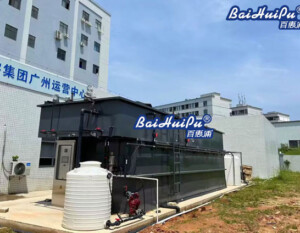To solve the wastewater problem of food processing plants immediately, it is necessary to comprehensively consider the characteristics of the wastewater, treatment objectives, economics and feasibility, and adopt a strategy of combining multiple treatment methods. The following are some recommended steps and methods:
1. Pretreatment stage
1. Physical solid-liquid separation:
Use equipment such as screens and sedimentation tanks to remove large suspended particles in wastewater to prevent them from clogging subsequent treatment equipment.
Screens can effectively intercept large debris, such as food residues, packaging fragments, etc.
Sedimentation tanks use gravity to naturally settle suspended matter in wastewater.
2. Coagulation pretreatment:
Add coagulants (such as PAC, PAM, etc.) to remove fine suspended matter and grease in wastewater.
Coagulants can cause colloidal particles and tiny suspended matter in wastewater to condense into larger flocs, which are convenient for subsequent sedimentation or flotation removal.

2. Biological treatment stage
1. Anaerobic biological treatment:
Use UASB (upflow anaerobic sludge blanket) and other technologies to degrade high-concentration organic matter and produce recyclable biogas.
Anaerobic treatment is suitable for wastewater with high organic matter concentration. The organic matter is decomposed into carbon dioxide, methane and other gases through the action of anaerobic microorganisms.
2. Aerobic biological treatment:
Under aerobic conditions, it further degrades the organic matter that remains after anaerobic treatment and improves the purification efficiency of wastewater.
Common processes for aerobic treatment include A2/O (anaerobic-anoxic-aerobic), A/O (anaerobic-aerobic) or SBR (sequencing batch activated sludge process).
These processes can not only effectively remove organic matter, but also reduce the ammonia nitrogen and total phosphorus content in wastewater through biological denitrification and phosphorus removal processes.
3. Deep treatment stage
1. Sedimentation tank:
The treated wastewater is finally separated into solid and liquid to ensure clear effluent water quality.
Sedimentation tanks can further remove suspended matter and colloidal particles in wastewater.
2. Membrane technology:
Use membrane technologies such as ultrafiltration and reverse osmosis to separate and deeply filter water to remove high-concentration organic matter, fat, color, taste and other substances.
Membrane technology is suitable for occasions with high requirements for effluent water quality and can significantly improve the purification effect of wastewater.
IV. Other auxiliary treatment processes
1. Activated carbon adsorption method:
Use the adsorption capacity of activated carbon to remove organic pollutants and pigments in wastewater.
Activated carbon adsorption method can be used as a supplement to deep treatment processes to further improve effluent water quality.
2. Electrolysis method:
Through electrolysis, harmful substances in wastewater undergo redox reactions and are converted into harmless substances.
Electrolysis is suitable for treating wastewater containing heavy metal ions or organic matter that is difficult to biodegrade.
V. Resource recovery and utilization
During the treatment process, attention should be paid to the recovery and utilization of resources, such as collecting biogas produced by anaerobic treatment for power generation or heating.
At the same time, it is possible to consider the secondary use of treated wastewater, such as for farmland irrigation or industrial circulating cooling water.
VI. Comprehensive application and optimization
According to the specific conditions and sewage characteristics of different food processing plants, the above-mentioned multiple treatment methods are comprehensively applied to form a scientific and reasonable treatment process.
In the actual operation process, the treatment process parameters and operating conditions should be continuously optimized to improve the treatment efficiency and stability.
Through the comprehensive application of the above steps and methods, the sewage problem of food processing plants can be solved immediately, ensuring that the wastewater meets the environmental protection emission standards and realizing the effective recovery and utilization of resources.